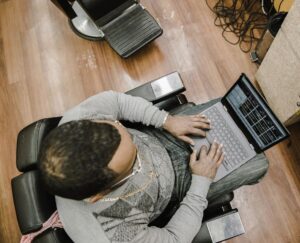Lights, Camera, Gallery!

Finishing this month, the First Bank & Trust Gallery is hosting Shadow Casting, an interactive yet socially distanced art installation. This exhibit features sculptures alongside accompanying photography. I discussed this new installation with Professor Behrends and discovered that the exhibit is the result of our current pandemic situation. “We are trying to get back to some-kind-of-normal, holding face-to-face classes and social distancing so that we can still take part in events and activities.” The topic of smartphone use was commonly discussed long before the pandemic. Now that we are limited with our interactions on campus, this exhibit encourages a creative way to use them for enjoyment in a way not typically considered. Using smartphones in the exhibit does not distract from the enjoyment; in fact, it is difficult to fully appreciate this exhibit without the added element. Social distancing guidelines are in place at the exhibit with capacity limited to five individuals at a time. Visitors are encouraged to come early and often, as this interactive experience will evolve over its lifetime!

To better understand how this exhibit was realized Professor Behrends shared with me that “Students make a wire sphere to learn how to build with wire,” gaining the fundamental knowledge needed to manipulate the metal and shape it into “four-legged animal[s] in a standing position” which are the focus of the exhibit. She also mentioned that this project is unique to each artist. “Even though students get the same instructions and materials, their projects always show something about the individual that made them.” Last semester saw the installation of a similar project inside the Trojan Center. The same wire bending technique was used to create spheres which were accompanied by paintings of the 3-D modeled objects. The new installation in the art gallery closely follows this technique but expands upon it with a new interactive element.

The accompanying photography demonstrates the ability to gain an extra element of art by introducing light. This increases the creativity of this project while also giving a slightly different experience each time it is observed. Similar to how the previous project used color this expanded exhibit builds upon the interactive elements of 3-D art captured on a flat surface. The bent metal is a perfect medium as the thin layers come together to form a solid object, yet at the same time remaining mostly translucent, allowing much of the light projected onto them to pass through, while casting shadows onto the wall behind. This presents a wonderful opportunity for photography as well as a great way to interact with art while appreciating it. The exhibit will continue to evolve as Professor Behrends let me know that working with the photography students was just the beginning of the collaboration for this installation.




